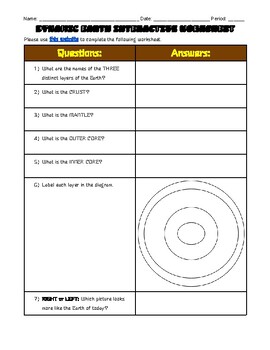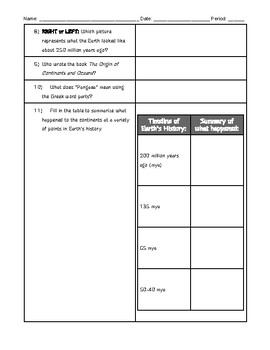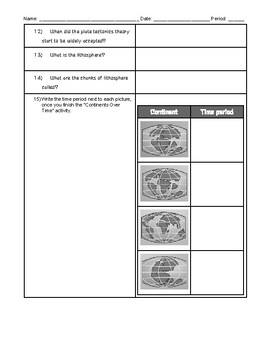Dynamic Earth Worksheet for the Annenberg Learner's Interactive Dynamic Earth
Mrs Glitterski Classroom
7 Followers
Grade Levels
6th - 12th
Subjects
Resource Type
Standards
NGSSHS-ESS2-3
NGSSHS-ESS2-1
NGSSMS-ESS2-2
Formats Included
- PDF
- Internet Activities
Pages
7 pages
Mrs Glitterski Classroom
7 Followers
Compatible with Digital Devices
The Teacher-Author has indicated that this resource can be used for device-based learning.
Description
This worksheet is written to go with the Annenberg Learner’s Dynamic Earth interactive lesson. Once students are on the website, they can go through the areas of the site to fill in the worksheet.
This lesson is a self-paced or teacher-paced lesson using the website to find the answers.
Total Pages
7 pages
Answer Key
Not Included
Teaching Duration
1 hour
Report this resource to TPT
Reported resources will be reviewed by our team. Report this resource to let us know if this resource violates TPT’s content guidelines.
Standards
to see state-specific standards (only available in the US).
NGSSHS-ESS2-3
Develop a model based on evidence of Earth’s interior to describe the cycling of matter by thermal convection. Emphasis is on both a one-dimensional model of Earth, with radial layers determined by density, and a three-dimensional model, which is controlled by mantle convection and the resulting plate tectonics. Examples of evidence include maps of Earth’s three-dimensional structure obtained from seismic waves, records of the rate of change of Earth’s magnetic field (as constraints on convection in the outer core), and identification of the composition of Earth’s layers from high-pressure laboratory experiments.
NGSSHS-ESS2-1
Develop a model to illustrate how Earth’s internal and surface processes operate at different spatial and temporal scales to form continental and ocean-floor features. Emphasis is on how the appearance of land features (such as mountains, valleys, and plateaus) and sea-floor features (such as trenches, ridges, and seamounts) are a result of both constructive forces (such as volcanism, tectonic uplift, and orogeny) and destructive mechanisms (such as weathering, mass wasting, and coastal erosion). Assessment does not include memorization of the details of the formation of specific geographic features of Earth’s surface.
NGSSMS-ESS2-2
Construct an explanation based on evidence for how geoscience processes have changed Earth’s surface at varying time and spatial scales. Emphasis is on how processes change Earth’s surface at time and spatial scales that can be large (such as slow plate motions or the uplift of large mountain ranges) or small (such as rapid landslides or microscopic geochemical reactions), and how many geoscience processes (such as earthquakes, volcanoes, and meteor impacts) usually behave gradually but are punctuated by catastrophic events. Examples of geoscience processes include surface weathering and deposition by the movements of water, ice, and wind. Emphasis is on geoscience processes that shape local geographic features, where appropriate.





